
The Jupiter-8 wasn’t Roland’s first analog polyphonic synthesizer – that was the Jupiter-4 – and it wasn’t the last. But to generations of musicians, and to Roland itself, it was the one that mattered. This was the instrument that put Roland squarely on the map, proving it could compete with the American giants dominating the era.
What set the Jupiter-8 apart was its sense of invitation. It was colorful – but used its colors with purpose rather than flash. It embraced a clean, linear layout that echoed ARP’s clarity yet went further in guiding the player through the signal flow. It encouraged exploration, offered clever performance features, and rewarded every twist of a knob with musical results. The Jupiter-8 isn’t just powerful – it is fun.

A brief look inside the Jupiter-8
A single glance across the panel tells you everything you need to know. The audio path runs through the center, starting with two VCOs. VCO 1 offers triangle, sawtooth, pulse, and square waveforms; VCO 2 provides sine, sawtooth, pulse, and noise, and can drop into a lower range to act as an extra LFO. VCO 2 can sync to VCO 1, and VCO 1 offers cross-modulation with VCO 2. A Source Mix knob blends the oscillators before they hit the filters.
Roland’s attention to detail shows in the 1982 update, addressing tuning precision and detune coarseness. Improved DACs brought far finer resolution to the VCOs’ digital modulation.
The filter section follows the classic Roland architecture found on most of their analog polysynths. A static high-pass filter provides bass roll-off without affecting the dynamic character of the sound, helping the instrument sit gracefully in a mix. After that comes the resonant low-pass VCF, switchable between 2-pole and 4-pole slopes, and assignable to either envelope. The VCA provides level control and a four-position switch for LFO-based tremolo.
Modulation lives to the left and right of the audio path. On the left is an LFO with sine, falling sawtooth, square, and random (sample-and-hold) waves. Alongside its rate control, a Delay Time parameter fades in LFO modulation after each note. The VCO Modulator section handles LFO and ENV 1 modulation for one or both oscillators, as well as pulse-width modulation via LFO, ENV 1, or a manual setting.
To the right, two ADSR envelopes include switchable key follow, with ENV 1 invertible. Either envelope can modulate the filter cutoff. ENV 2 usually drives the VCA, while ENV 1 serves additional modulation duties.
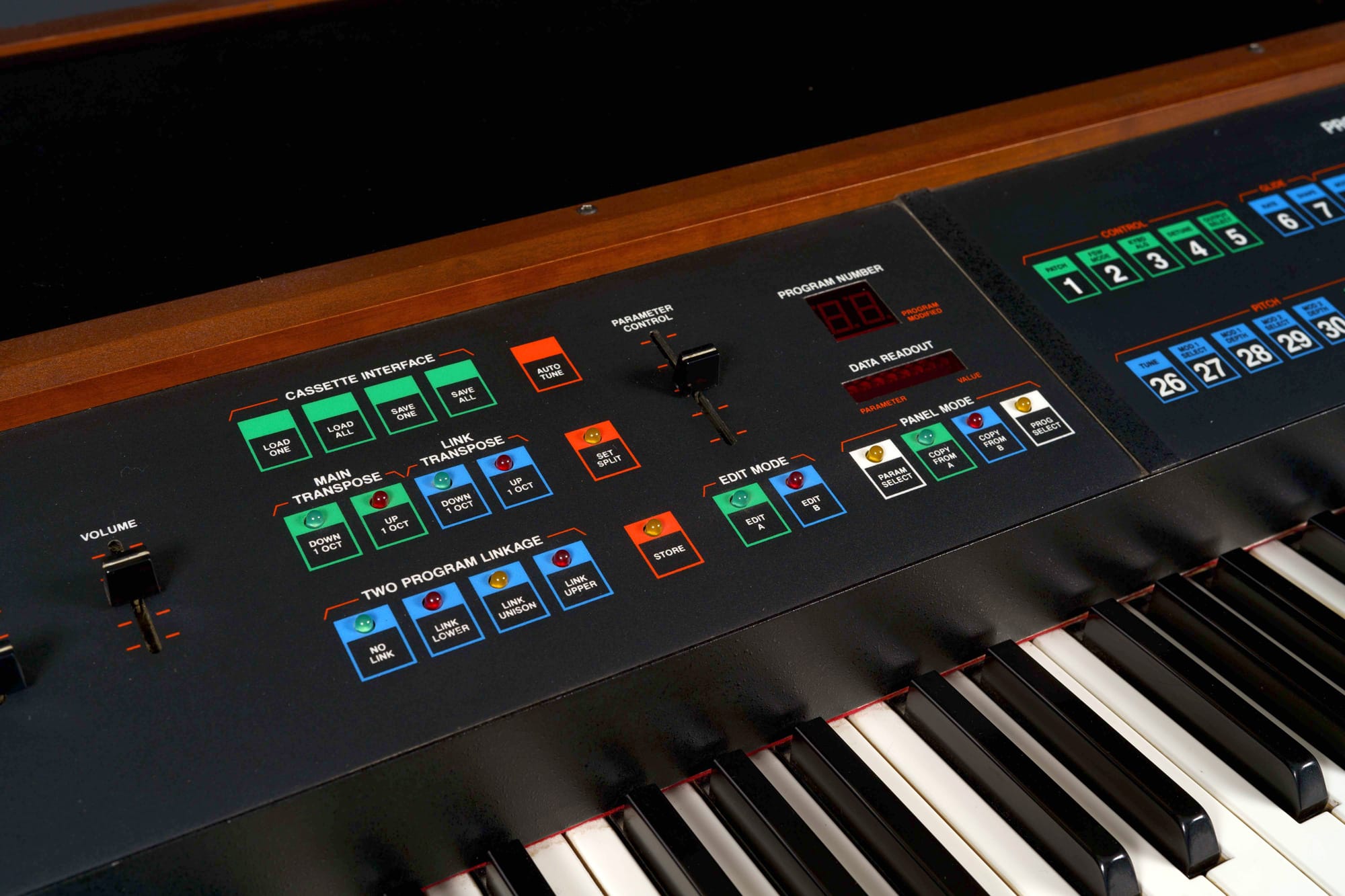
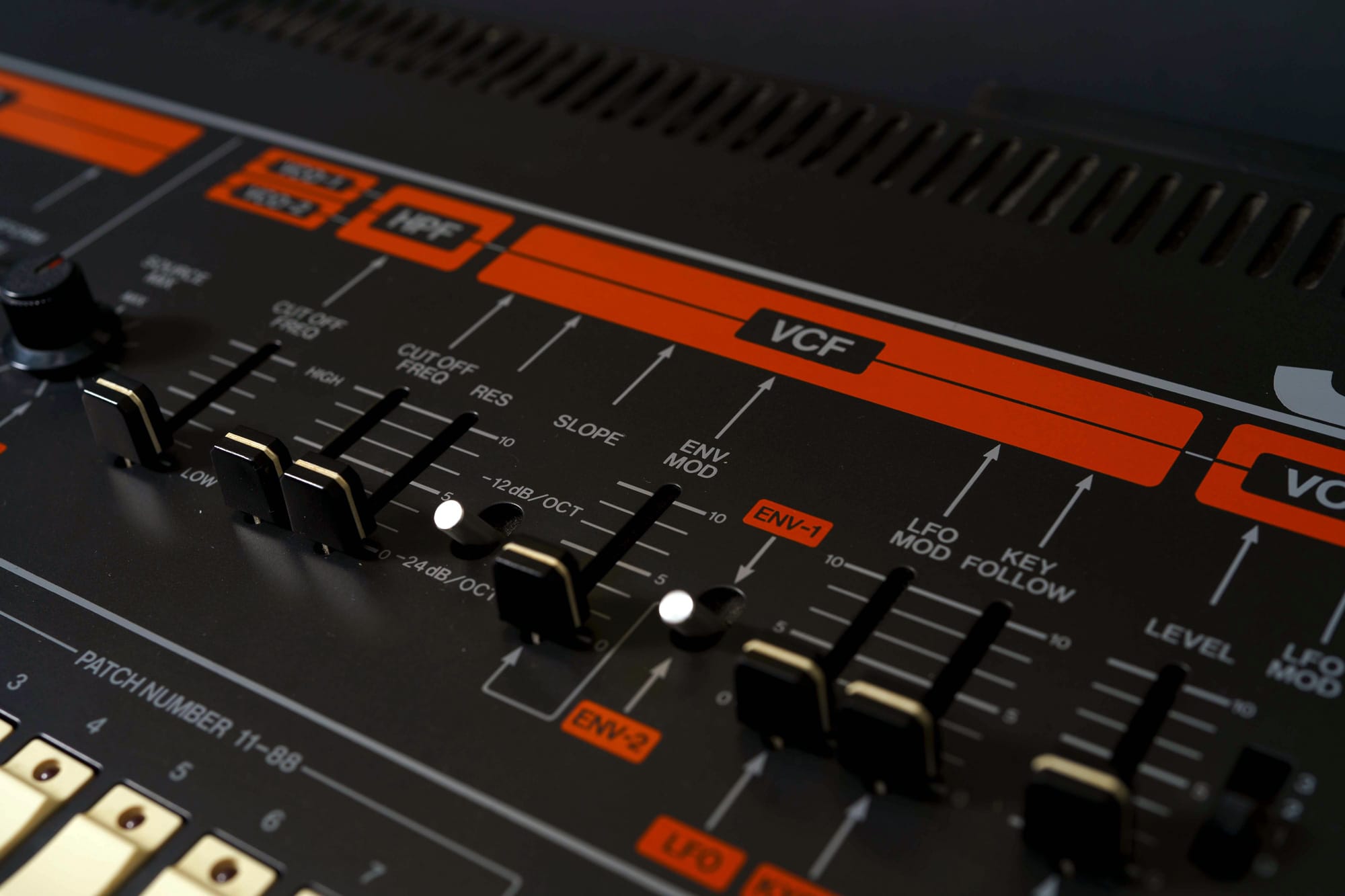
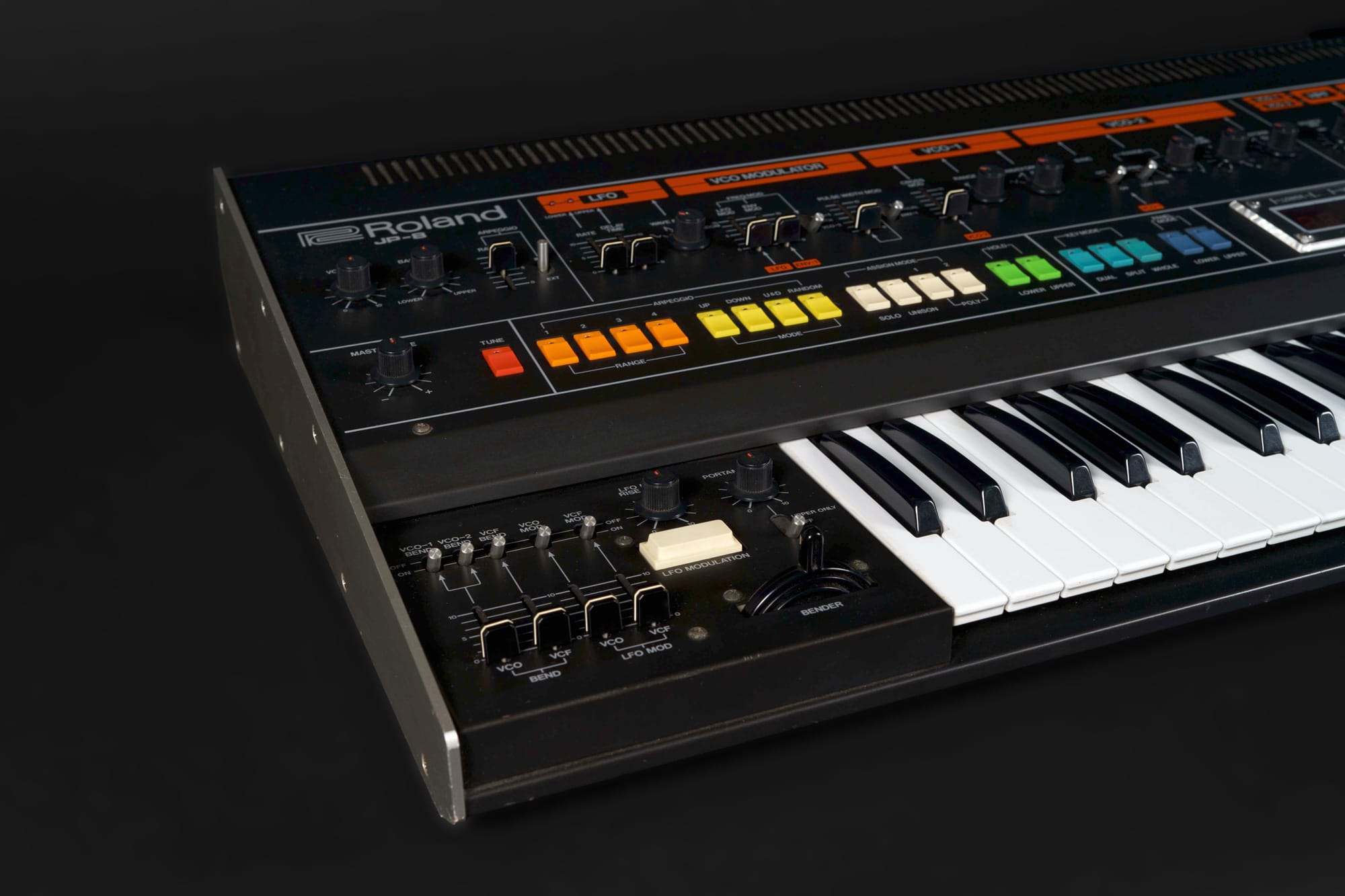
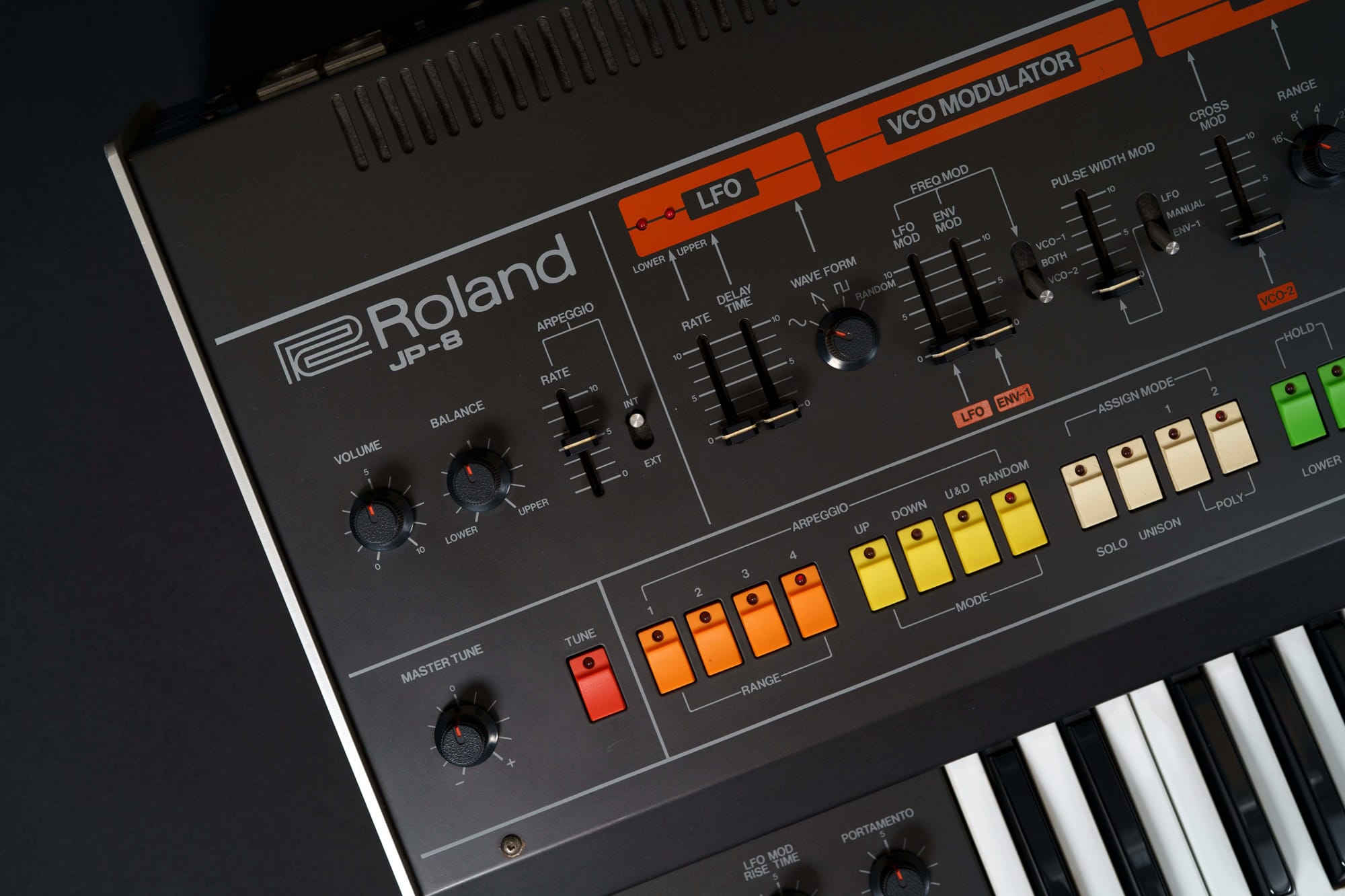

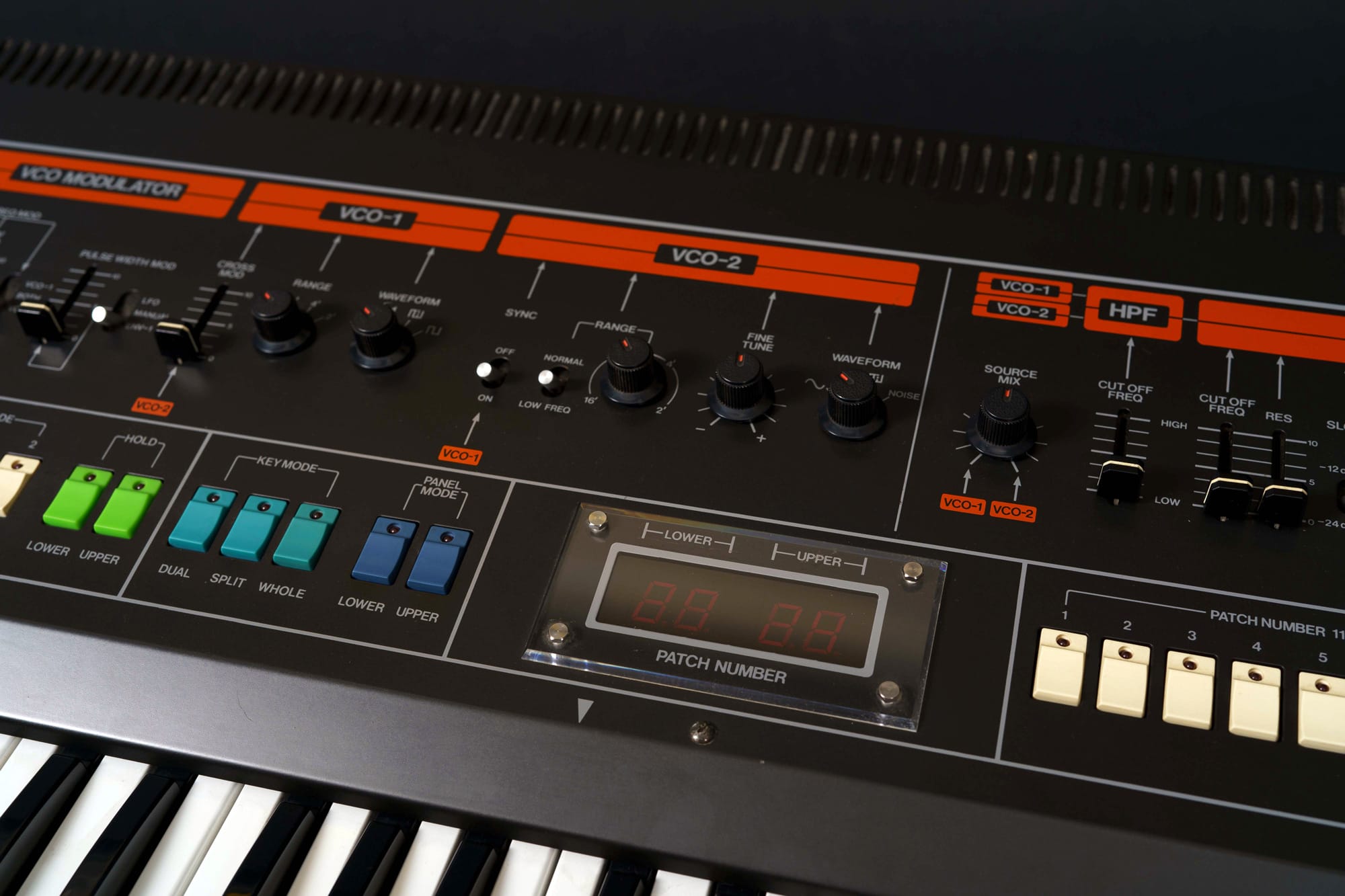
All photos by Peter M. Mahr.
Functional beauty and beautiful function
For all its depth, the Jupiter-8 feels immediately understandable. Every control that influences – or is influenced by – something else is clearly labeled with its counterpart. It is, effectively, a quick-start guide printed right on the panel.
The mix of knobs and sliders is intentional rather than dogmatic, and the color-coded switches govern tuning, arpeggiator modes, voice assignment, keyboard modes, program recall, and tape backup. Layers and splits are central to its design, with two Lower octaves and three Upper octaves on the 61-note keyboard. Upper and Lower patches can be stored independently, and functions like the arpeggiator and the lush polyphonic portamento can be assigned to one side or both.
Solo mode stacks all 16 VCOs onto a single key, while Unison mode spreads them across the notes played – 16 on one note, 8 and 8 across two, and so on. Roland’s iconic left-right pitch bender and large white modulation button anchor the performance section, with additional CV inputs on the rear panel for expanded routing.
Reliable, great-sounding, and a joy to program, the Jupiter-8 stands as a watershed moment in synthesis – a polyphonic instrument with elegance, character, and refinement to spare.


A modern take on a colorful classic
Our friends at Cherry Audio just released the Mercury-8, building on their renowned Mercury legacy, with a passionate focus on detail and modern technical advancements. Every aspect of the original hardware has been meticulously modeled to capture the authentic sound and behavior that made the JP-8 so legendary. Furthermore, Mercury-8 goes “beyond Jupiter” by offering expanded polyphony, versatile modulation options, studio-quality effects, and expressive performance capabilities.

Mercury-8 also features three independent effect chains and provides 20 studio-quality effects for chains that can be customized, saved, and recalled. Producers can get started immediately with over 600 professionally designed presets, including precise recreations of the 64 original JP-8 factory patches along with "Factory Plus" enhanced versions.

Mercury-8 features a highly optimized dual-layer architecture that supports 16 polyphonic voices per layer, enabling powerful split keyboard and dual-stacked modes. Analog drift and condition controls enable fine-tuning of the synth's age and state, and the multi-voice mode provides subtle to extreme variations in pitch, panning, filtering, and envelopes for tones and patterns.
The comprehensive modulation matrix includes four slots with user-friendly click-to-assign functionality, offering dozens of source and destination options. The built-in arpeggiator and 16x4 programmable polyphonic step sequencer are both syncable and transposable, and feature flexible humanize settings to create endless pattern possibilities.
Price: $69 https://cherryaudio.com/products/mercury-8 (available from November 25, 2025)


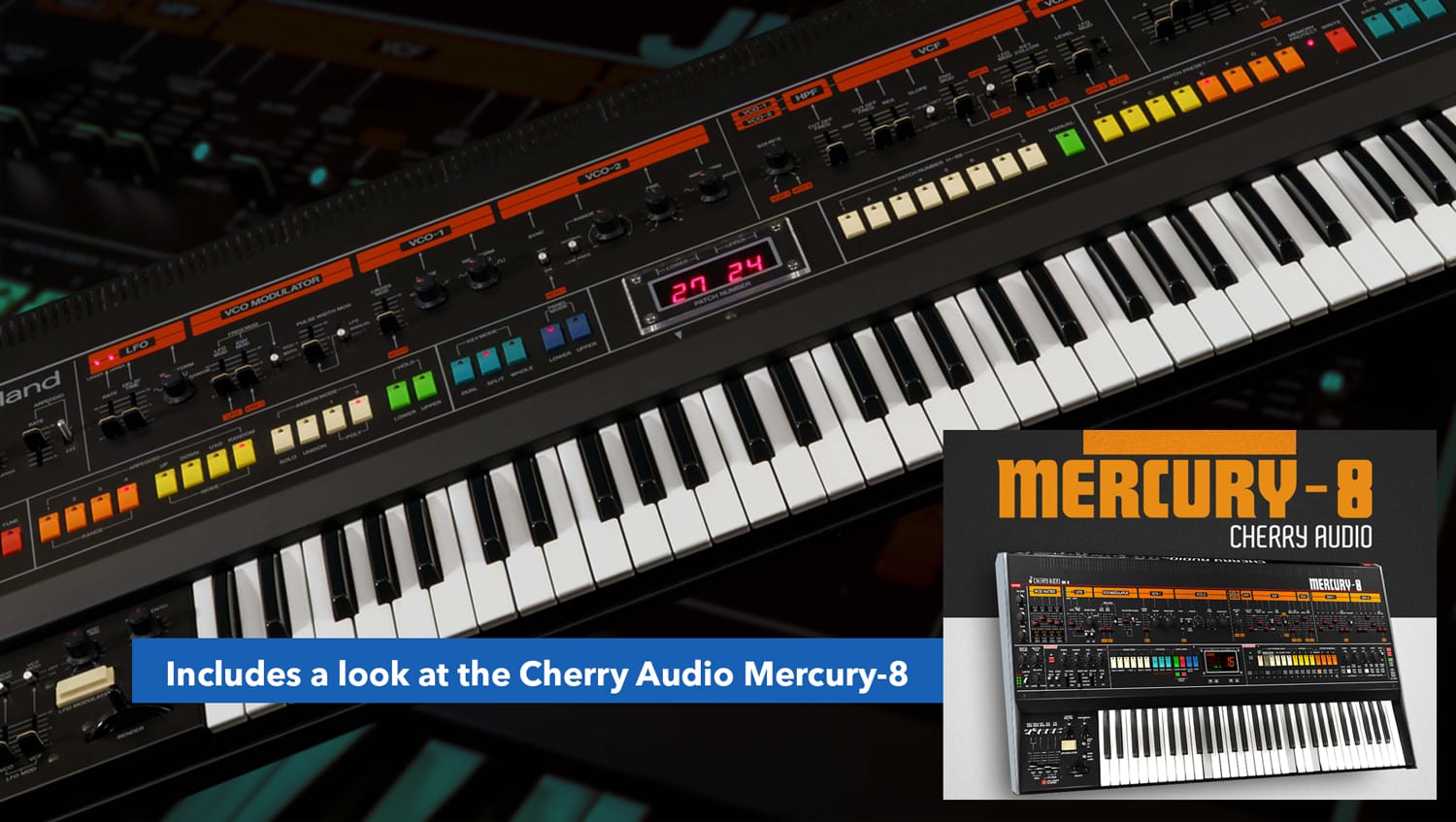






Comments